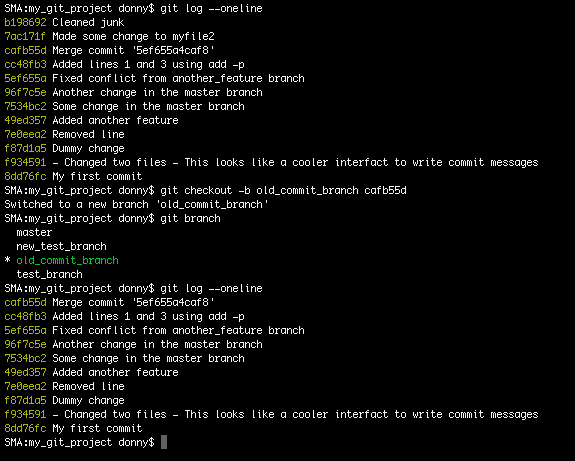

Cherry-pick the changes over to the correct branch and then reset the original branch to the previous commit.



Cherry-picking is a great way to tackle these common problems: Unlike a merge or rebase, cherry-picking brings only the changes from the commits that you select, instead of all the changes in a branch. Copy commits (cherry-pick)Ĭopy commits from one branch to another by using the cherry-pick option. To learn more about merging, rebasing, and branching in general, see Git Branching on the Git website. Then right-click main and select Rebase 'New_Feature' onto 'main'. To do the same in Visual Studio, check out the feature branch by double-clicking it in the branch list. To rebase the main branch into your feature branch on the command line, use the following commands: git checkout New_Feature Then right-click main and select Merge 'main' into 'New_Feature'. To merge the main branch into your feature branch on the command line, use the following commands: git checkout New_Feature Replace it with the name of your own branch. The following instructions use New_Feature as an example name for a feature branch. In Git, you can include these updates by merging or rebasing branches. It can also happen when you're done working on your feature branch and need to keep your changes by adding them to a different branch. This can happen while you're still working on your feature branch. If you're using Git branches to work on different features, at some point you'll need to include updates introduced to other branches. To learn more about squashing, see Git Tools - Rewriting History on the Git website. After you review and update your commit message, select the Squash button. Visual Studio automatically combines your commit messages, but sometimes it's better to provide an updated message. Then right-click and select Squash Commits. To merge commits in Visual Studio, use the Ctrl key to select multiple commits that you want to merge. Then update pick to squash, save, and update the commit message. You can squash two commits on the command line by using the following command: git rebase -i HEAD~2 This option can be helpful if you make frequent commits and end up with a long list of commits that you want to clean up before pushing to a remote repository. To merge a series of commits, Git provides an option to squash commits down into a single commit. To learn more about amending, see Git Tools - Rewriting History on the Git website. Select the Amend checkbox and then commit your changes. If you need to include code changes to your last commit, you can do that in the Git Changes window. When you finish editing your commit message, select Amend. Open the commit details of the last commit by double-clicking it, and then select the Edit option next to the commit message. The Git Repository window makes it easy to update your commit message. You can amend a commit on the command line by using the following command: git commit -amend Sometimes you just need to update your commit message, or you might need to include a last-minute change. Updating the last commit is called amending in Git, and it's a common use case. Or, you can work locally with no provider at all. And, you can work remotely with the Git provider of your choice, such as GitHub or Azure DevOps. Version control with Visual Studio is easy with Git. The Git Repository window is also a great place to visualize and manage your branches. For example, you might need to reset, revert, or cherry-pick commits, or just clean your commit history. The Git Repository window provides a full-screen Git experience that helps you manage your Git repository and stay up to date with your team's projects. Applies to: Visual Studio Visual Studio for Mac Visual Studio Code


 0 kommentar(er)
0 kommentar(er)
